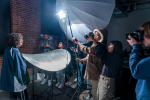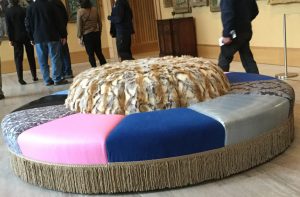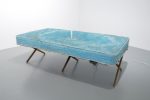Virgil Marti’s sculptures “Night Watch” and “Vesper” stand like sentinels at the entrance to the Philadelphia Photo Art Center with a kind of haunted-castle grandeur. The 6-foot, 80-pound slabs are shaped like ornate mirrors one might find in Snow White’s stepmom’s bedroom; instead of glass and foil, though, they’re made of rough plywood plated in chrome. They reflect a dull sheen from a nearby window, but no clear images—it’s a standoff between viewer and mirror in which Narcissus loses, and a perfect greeting to Wall Space, a great little show about image.
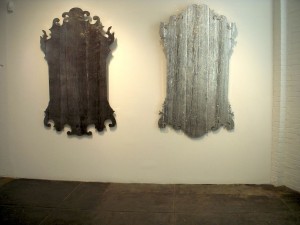
They’re not the only nonphoto works at this Photo-titled venue, either; the inclusion of a few paintings and sculptures in the show pushes the ‘A’ in PPAC beyond the confines of photography—a good move. Without a strictly defined theme, Wall Space’s 16 works by seven artists deal with the presentation of image—rather, the desecration, mutilation and obfuscation of image. Portraits, landscapes, movie-poster collages and faux mirrors offer ambiguous, and in some cases, hostile portrayals that defy the conventions of image-making, especially at a gallery with such a focus on photography.
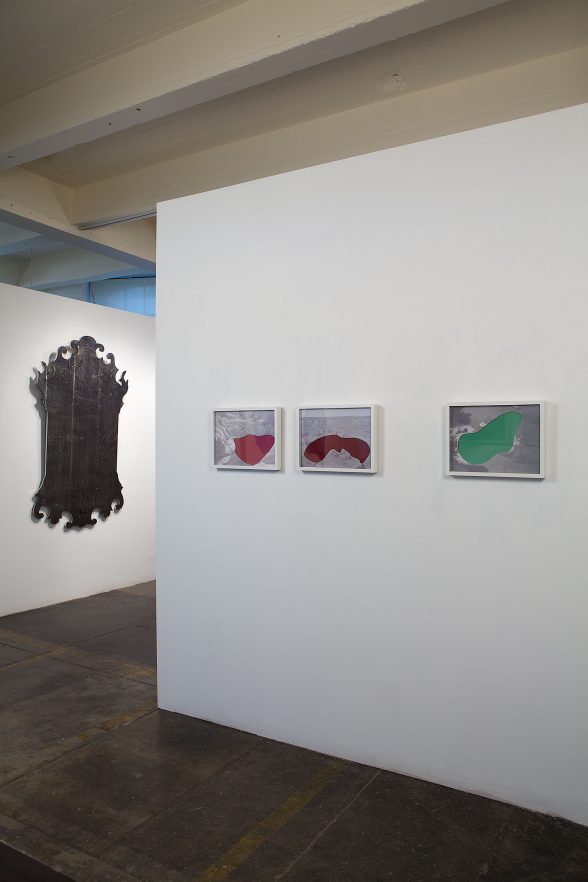
You might think of an image as something built up to an organic whole. Here, image is fragmented, transformed by cut-and-paste, cover-up and abstraction—Wall Space is more about deconstructing, disassembling and dissembling images. It’s a fitting subject when bedrock human concepts like identity and friendship are decomposing in cybermystery. Who are we, anyway—the composite of the images we create of ourselves on Facebook and Twitter, Gmail and Flickr? Not really.
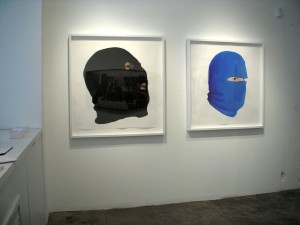
One image-management-avoidance tool is hiding. Julie Weitz’s gouache drawings “Big Black” and “Big Blue” elevate it to the realm of icon. The beautiful portrait drawings of two heads covered by Balaclava face masks might be advertisements, they’re so beautiful, seductive and illustrational. They also suggest robbers or terrorists. The person beneath the mask is hidden, the image unresolved.
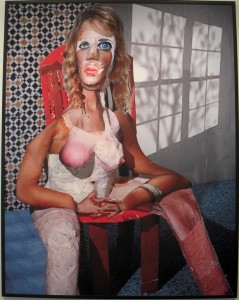
Nearby Marti’s wooden mirrors, two large color photos by Daniel Gordon, “Purple Bust” and “Seated Portrait,” are as crisp and snappy as the opening works are veiled. Gordon’s work begins with the printing out and cutting up two-dimensional images of people found on the Internet. He then assembles the jumble of eyebrows and skin tones into collage sculptures and photographs them. The effect is one of disturbing nonlikeness—a human hodgepodge with a blue eye culled from one source, a breast from another, hair, hands, legs, feet from somewhere else.
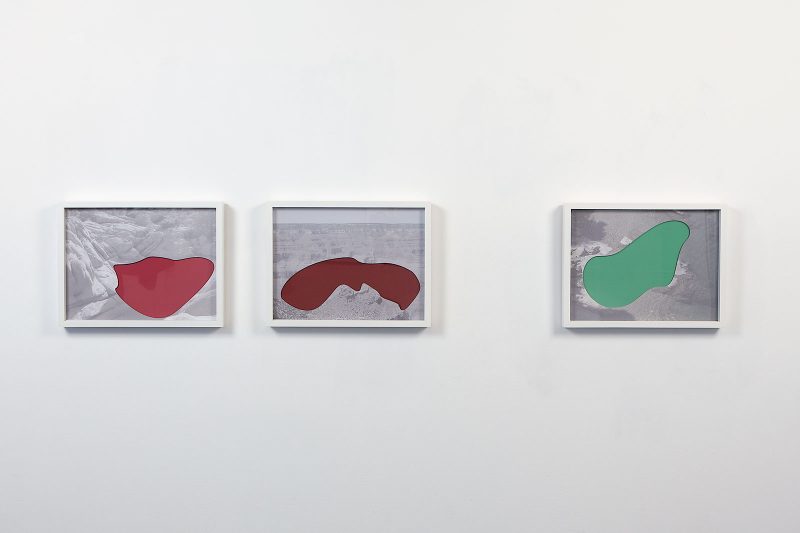
Even the image of Earth as steadily eternal is changing. Depending on your state of alarm about global warming, you will react variously to Micah Danges’ series of bleached-out black-and-white landscape photographs with abstract color shapes inlaid like transplanted organs. The photos, on Plexiglass supports, have holes vaguely resembling bodies of water carved into them, which are filled with biomorphic color fields. While John Baldessari has been bombing photographic images with colored dots and shapes for years, Danges’ landscapes are far more unsettling—rather than a Pop move, these suggest a godlike planner altering the land for some inscrutable corporate use.
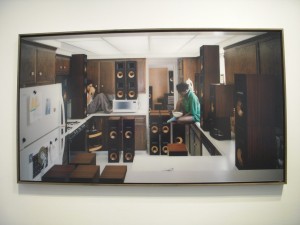
Many of the works in the show, Gordon’s in particular, seem preoccupied with popular culture, which is as it should be. Pop culture reflects us and directs us. Gordon’s cut-and-pastes echo the culture’s acceptance of changeability. Want to change your hair color from blonde to brown? No problem. Want green eyes, a new chin, a divorce, a record expunged? All can be changed in a culture of malleability. You can ponder changing yourself – and get a phone number or web address to do so – while reading the ads on the city bus. What does it say that image altering remedies are broadcast everywhere in our culture?

Anita Allyn’s altered movie poster/protest signs, Luis Gispert’s color photo “Cold Storage” and Christian Boltanski’s 1987 “Monument,” round out the show. Gordon gives a lecture about his work at the PPAC Jan. 27 at 7 p.m.
Through Feb. 26. Free. Philadelphia Photo Art Center, 1400 N. American St. 215.232.5678. philaphotoarts.org
Read this article at Philadelphia Weekly. More photos at flickr.


